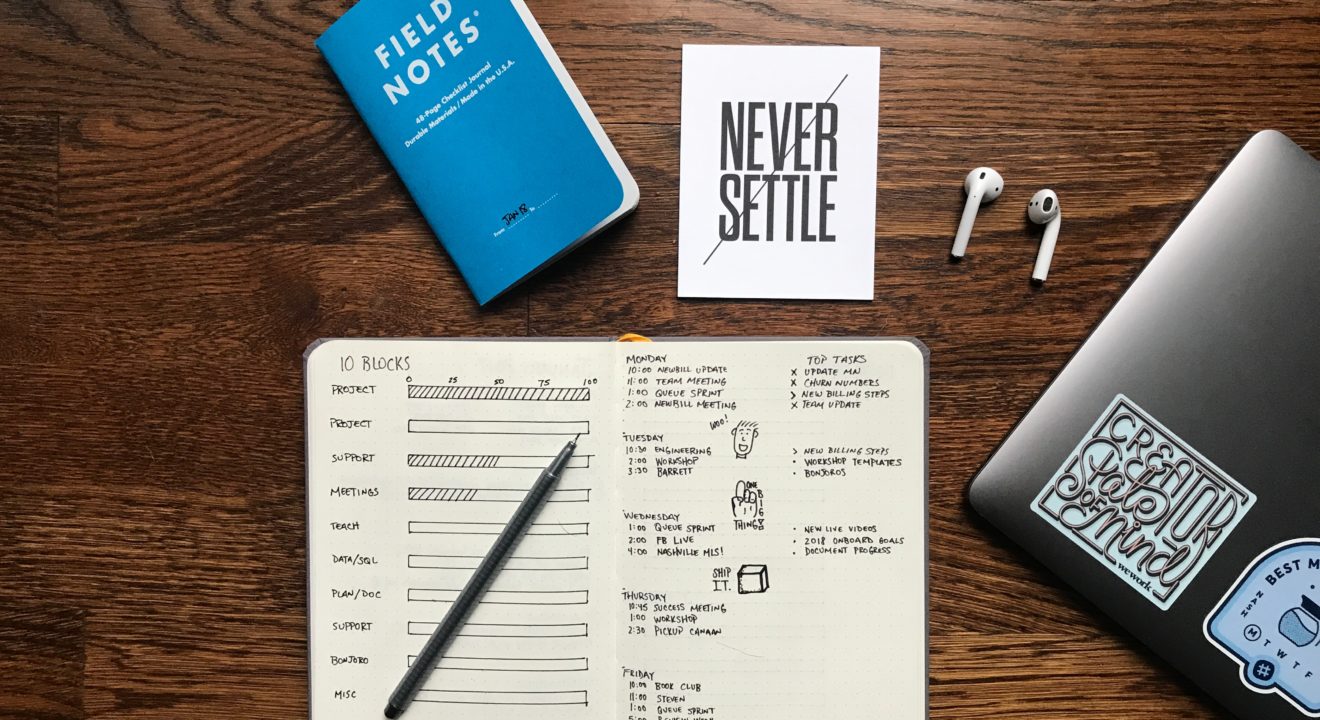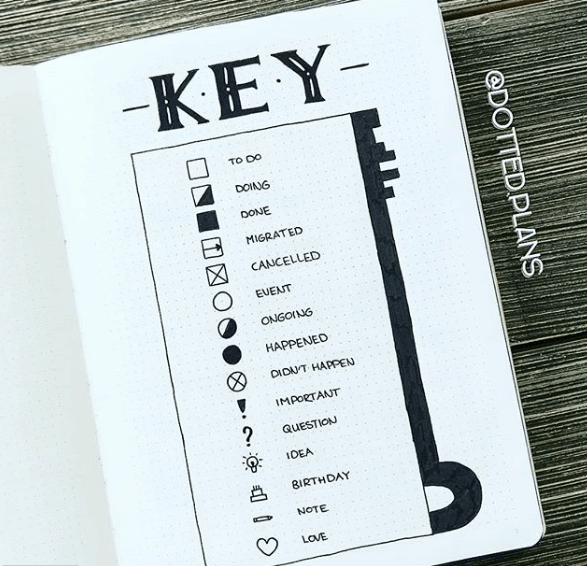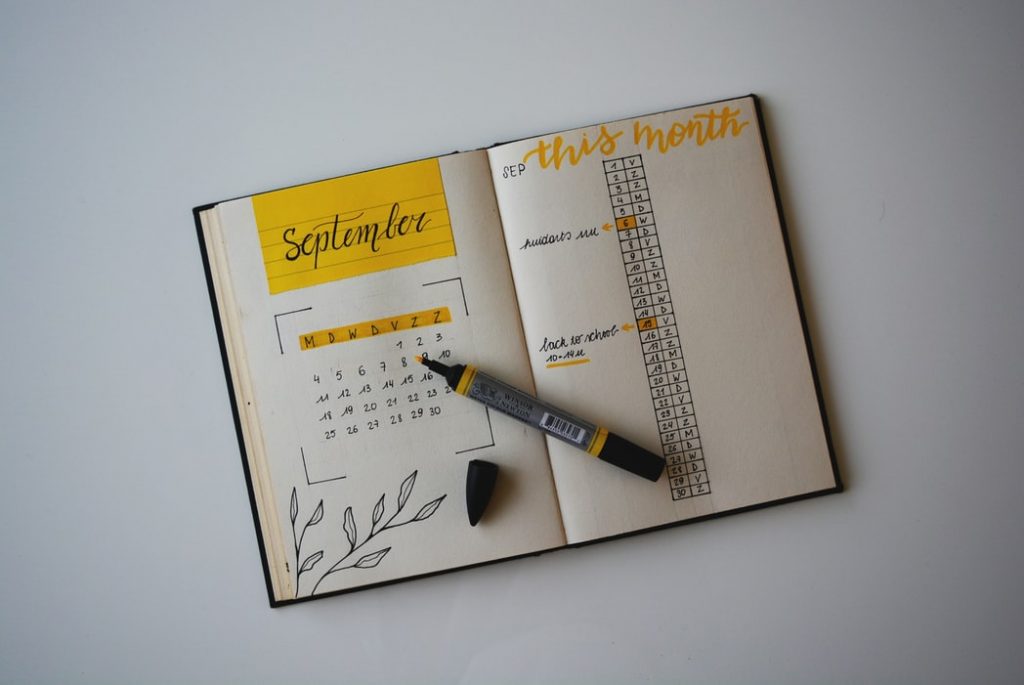Lifestyle April 8, 2020
5 Steps to begin your journey.


There are countless Youtube tutorials, blog posts, and other articles teaching you how to start a bullet journal. Trying to keep track of all your thoughts, tasks, and events you may have coming up in the month can be really stressful. So, here are 5 basic tips to start your own bullet journal and declutter your mind.
Bullet journaling or “Bujo”, is a way to help track your past, organize the present, and plan for the future. Bujo is otherwise described as the “KonMari for your racing thoughts.“

There are two supplies you need: A gridded journal and a pen or two. YouTuber AmandaRachLee dedicated a whole video on the 13 supplies she needs for her bullet journal.
Supplies include:
A journal can either be bought directly from the Bullet Journal site, or outsourced from a place like Amazon.
Each Bujo starts off with an index and a few different log types: future, monthly, and daily. In each log, you are able to put events, tasks, or notes that you have for that specific timeframe.
The whole purpose of Bullet Journaling is intentional living. Intentional living requires organization and ease of mind.
The inventor of the modern bullet journal as we know it today is Ryder Carroll. He talks about the importance of intentional living in his TEDx Talk and ensuring that you are making decisions and that decisions are not making you.
Carroll explains that sometimes being busy doesn’t mean you’re productive. He says that it really means that you are, “functionally overwhelmed.” This means that we are focusing on too many things at once. We have work, our home life, our hobbies, and all sorts of things jumbled up in our brains.
He created this journaling system to help organize himself as a person with ADHD. After showing it to some friends, he realized he could teach this method to other people. Now, on social media, there are hundreds of thousands of people posting their own bullet journals.
To create an index, you could number the page going all the way down to the bottom. Then, you create a series of symbols to represent each task and how the task is progressing. Each new entry put into the bujo will then be placed into your index with the page number and title of the page.


The future logs are more generic but set dates such as birthdays, anniversaries, appointments, deadlines, etc.
In monthly logs, you are able to put those events but a little more specificity. So for example; grocery shopping dates, self-care days, or maybe a romantic date with a significant other.
Daily logs are where you are able to notate the nitty-gritty. This could be your thoughts for the day, what you need to get done by the end of the day, gratitude lists, and reminders of important events.


The future log is to see a bigger picture of what is to be expected for either the next 6 or 12 months. Those who have not bullet journaled before, plan for the next six months to start.
How do you create a future log you ask?
The process is fairly simple. In the notebook that you are using, count the number of lines on the page and then divide by 3. Once you’ve done that, draw two horizontal lines across both pages. Now that you have 6 boxes, label each box with a month and number the pages.
Then, index that page.


After you have created your future log, the next step is to create a monthly log. This monthly log will help you see what needs to be done for the month to plan accordingly.
The left page of your monthly logs is the calendar, number the page vertically with all the days of the month and the first letter of each day next to it. Use the right side of the page for monthly task lists.
This list allows a clear outline of all tasks that need completing this month. Once you have completed the page(s), number the page and index the page.


Daily logs get a little more intricate and detailed. The daily log gives a clear overview of what is planned for the day. There are three types of entries that can go into the daily log: task, events, and notes.
Tasks are things that need to be completed that day. Tasks are notated with a simple dot. A task can be either incomplete, complete, migrated, moved to future logs, or voided out. Each status has a different mark.
For example, in some bujos I have seen, a completed task is notated with an “x”, and an incomplete task is marked with a dot. A task moved to the collections section is marked with “>”, a task scheduled for the future is marked with a “<“, and an avoided task is struck-through.
Events are date-related entries. These are notated with open circles bullets “O”. Events can either be scheduled or logged after they have occurred.
Notes can be many things: ideas, facts, thoughts, or observations. This is something that works well for meetings, jotting down assignments, grocery lists, or if you need to write something down so you won’t forget it.
Being able to notate and understand the different entries (thanks to your index) are important especially when the lists get lengthy.
Collections are important for grouping multiple tasks, events, and notes. Items can be migrated to collections or removed from collections at any time.


At the end of every month or even every week, you can go back to see which tasks have been completed. Then, see which ones have not been completed or were deferred for whatever reason. This will help you to gauge how productive the month or week has been.
If you need a little help organizing your life or even your thoughts, bullet journaling may be the activity for you. Once you begin, the next step is to learn how to make the most out of a bullet journal.